
I have written about different parts of the area around N. 16th and Locust Streets. I’ve researched and written about the town of Saratoga and Sulphur Springs; I have explored and highlighted North 16th Street; and I have examined the theatres at the intersection. However, anytime I see pictures of this particular intersection, my imagination flares up and my hopes are raised.
Bakeries and drug stores, doctors’ offices and saloons, grocery stories and theatres: The intersection of N. 16th and Locust Streets in North Omaha was once a very lively, very interesting place. While its a bit empty and shuttered and kind of dangerous there today, its hard to imagine trolleys coming and going, a huge viaduct over chugging trains, and people hustling and bustling around. But those were the days.
Whether you “went up the hill” from East Omaha or down the block from North Omaha, everyone came to the intersection of North 16th and Locust to take care of business. This is a short history of the North 16th and Locust Street Historic District.
The Town of Saratoga

Omaha was founded in 1854 in the area we known as downtown today. That same year, speculators started founding towns up and down the Missouri River. Four miles north of Omaha there was a spring flowed from the bluffs looking over the river at a bend in the river. A half mile away a town was started at the bend where the Sulphur Springs flowed. The town was called Saratoga, and the bend in the river was made into a boat landing called the Saratoga Bend.
Within a few years, a dozen houses, businesses and a school had sprung up in the town of Saratoga, which surrounded the present-day intersection of N. 24th and Ames. There were also streets laid out next to the river at Sulphur Springs.

The town went broke in 1857 and was officially wiped off the map. Wealthy Omaha real estate tycoon Herman Kountze bought much of the land. Some homes stayed there for decades afterwards, and the people and businesses that made up the community stayed intact. Omaha annexed the area in the 1870s. It was the area above Sulphur Springs where Nebraska’s first legal execution was held in 1863, when the Douglas County Sheriff hanged a former Kansas Territory legislator for killing a man.
The Sulphur Springs boat ramp was located located on the Missouri River at Saratoga Bend, which was located on the northwest corner of the present-day intersection of present-day Locust Street and Carter Lake Drive, just east of the intersection of N. 16th and Locust. Apparently, all signs of that town have been obliterated in modern times.
Omaha Driving Park

Starting in the 1860s, Omaha’s elite had been building country estates throughout the fields and forests of present-day North Omaha to keep themselves away from the regular riff raff living in present-day downtown Omaha. Even the wealthy needed a place to recreate though, so they opened the Omaha Driving Park just north of 16th and Locust in the 1870s. Their association made the track and built grandstands for observers to watch them race buggies and have good times.
Over the next 40 years, the Driving Park went in and out of style and came back again during the Trans-Mississippi Expo. During a time of low usage, Buffalo Bill worked out his Wild West Show there, performing regularly for crowds that came out from Omaha to watch the affair. The Omaha Driving Park Association also hosted the Nebraska State Fair at the site several times, when Omaha and Lincoln took turns hosting the Fair for five years at a time.

Emil Brandeis, one of the scions of the Brandeis Department Store family, raced early automotive race cars in the 1910s. Lacking organized tracks, his crew made use of the Omaha Driving Park for its last time. The last recorded event I can find evidence of there happened in 1913, when old fashioned racers took to speeding over its wooden track. The park was closed and the land was bulldozed almost immediately afterward to be made into houses.
The intersection of N. 16th and Locust was built up right after that.

20th Century Construction

Starting with the close of the Trans-Mississippi Expo in late 1898, real estate speculators were selling land all around the intersection. Way back in the 1890s, land barons from Detroit and other East Coast interests began selling land in present-day Carter Lake, Iowa. Lots were being sold near Courtland Beach and at the Carter Lake Club, an exclusive resort where home values were booming. One of the earliest electric streetcars in Omaha ran from the 16th and Locust Street intersection down Locust into what was then called East Omaha, what we now call the town of Carter Lake.
By 1899, the real estate speculators were trying to help sell their properties by making sure that the streetcars kept running down Sherman Avenue all the way to Locust from downtown Omaha. The Omaha Street Railway Company made that happen.

In the first decade of the 20th century the N. 16th and Locust intersection experienced a building boom. In 1900, a two story building with a bar, card room and offices above it was constructed on the southeast corner. It’s still standing there now. In 1905, William H. Patton built a two-story blacksmith shop on the northeast corner, and in 1906, J. R. Salisbury built a one-story brick hardware store just off the intersection.
The State Bar sat on the southeast corner for more than 50 years, and the red two-story building is still there. Joseph Houska built a two-story store at the end of that block that’s still there today, and McKenna’s Hall was the first occupant there. Political rallies, social events and more filled the building for years.
The Stanley Drug Store was located at 2825 N. 16th starting at the turn of the century, and Lane Drug Store was located catty corner from it at 2902 N. 16th, directly on the corner, from the 1910s into the 1980s. The Blake-Bradish Drug Co. was located at 2902 Sherman Avenue from the 1890s through the 1930s, at least.

The southwest corner of the intersection, which held 2828 Sherman Avenue, has a long, interesting history. Otto Wolff was a storeowner and reportedly a vice consul for the Danish government. Basically, he had his native government’s permission to act on their behalf in business matters. He built his office at 2828 N. 16th in 1878 and stayed there at least until 1909. By 1918, Dr. James C. Bishop was practicing medicine at this address.

There was a lot going on just east of the intersection. One of Omaha’s early baseball fields was located on the bluff looking down on Carter Lake. At different points after 1900, at the bottom of the bluff there was a racetrack, velodrome and horse stables. Less attractive were the “hobo jungles” located north of Locust along the railroad tracks in the 1920s and 1930s. None of that kept the intersection from being successful.
Recreation at the Intersection

In addition to successful commercial activities, there were also recreational things going on. Bars and taverns near the intersection included The Nip, the State Bar, Shawnees’, A-1, and the Doghouse.
There were four theaters at the intersection of 16th and Locust Streets. They were the IT Theater; the New Star Theatre; the Corby Theatre and the Grand Theatre. Three buildings are still standing today, including one recently recognized for its historical significance.
The first theater near this intersection was called the IT Theater, and was located at 2910 Sherman Avenue starting in at least 1909. They showed moving pictures, and eventually transitioned to movies. The theater changed hands a lot throughout its life, but its building still stands today. Today it can be found at 2910 N. 16th Street.
The Corby Theatre was built in 1928, and is located at 2803 N. 16th, a block from the intersection. Inside the same building was Tuts Cafe, J and G Bakery, and Letha’s Beauty Shop. Next door to it is a small one-story building that was built in 1900.
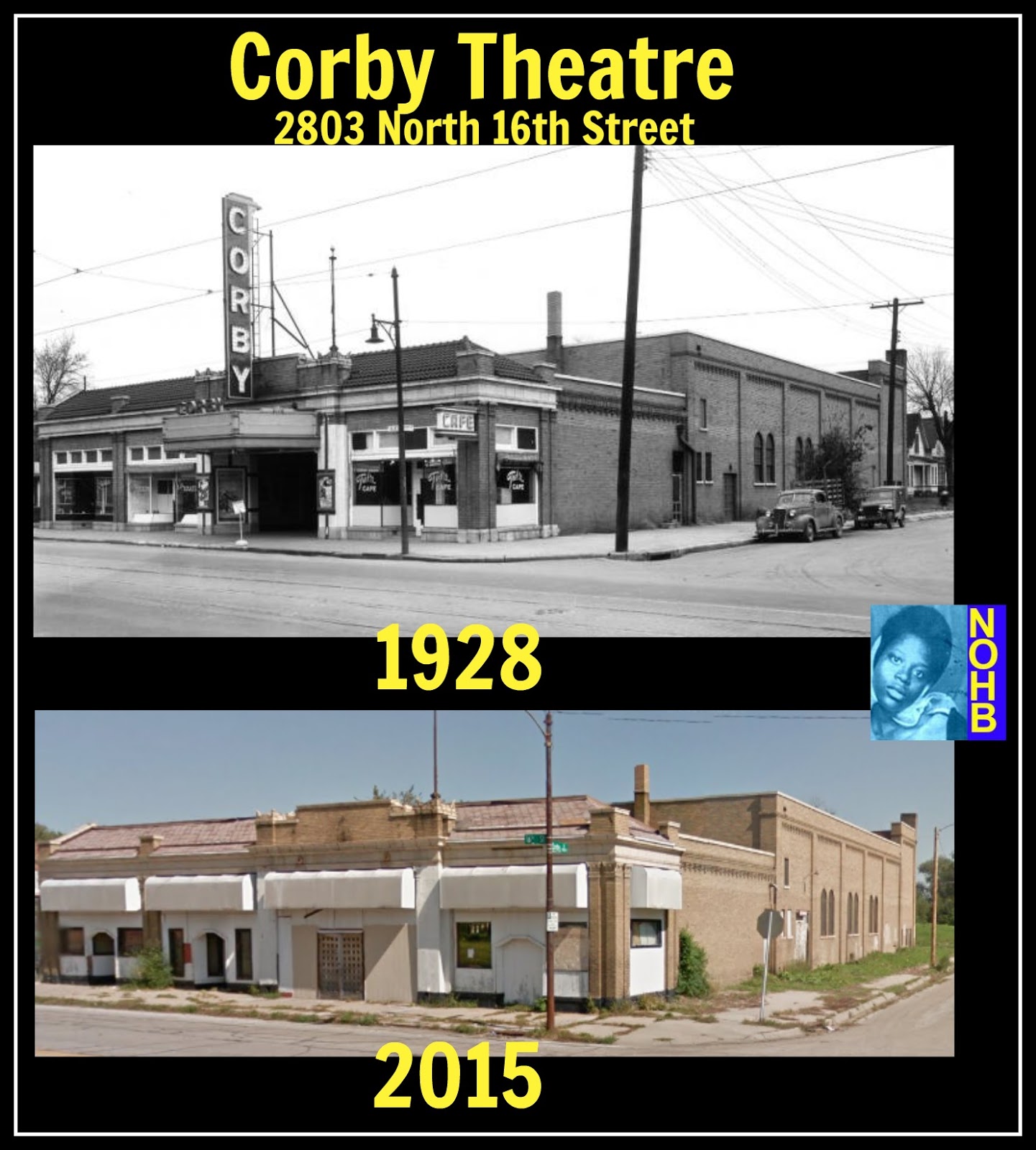
The New Star Theatre was a short-lived enterprise on the northeast corner of 16th and Locust. When it was built, the theater was housed in a two-story building next door to the Safeway grocery store. It was torn down within a decade after it opened in 1910 to make way for a larger grocery store.
The McPherson Theater Company built the Grand Theater just north of 16th and Locust in 1915 and opened it in 1916. Lasting into the 1920s, the theater didn’t survive the Great Depression. However, it still stands today and is cared for by a church. In 2019, it was listed on the National Register of Historic Places.
Even though two of them are in dubious condition, three of the intersection’s four movie theater buildings are still standing today: the Grand, the Corby and the IT.
In 1913, the notorious Easter Sunday tornado blasted through the area just east of the intersection. When it touched down below the bluff at N. 14th and Spencer, it destroyed the Missouri Pacific Railroad roundhouse that was there. Apparently there was a fire at the new roundhouse that destroyed it again in 1915.
Change Through the Decades
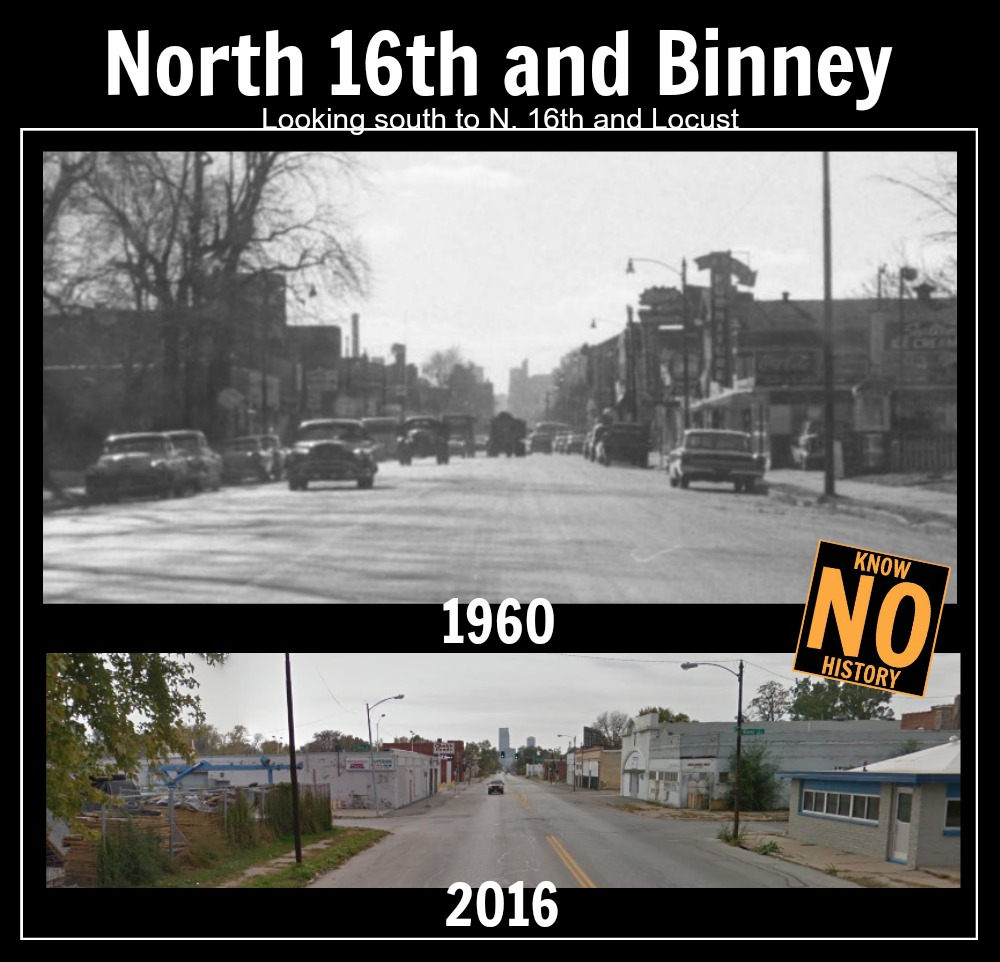
By the 1940s, the first generation of businesses had cycled out and the next generation was coming in. For the next few decades, Lane’s Drug was on the northwest corner and Hinky Dinkey groceries was on the northeast corner. Wolf Brothers Clothing was on the southwest corner and the State Bar stayed open on the southeast corner. The Corby Theatre and a diner were at Corby Street, and an Italian barber shop played opera on the radio. The corner had a good restaurant, a second clothing store, and Woolworth’s, a popular five and dime store with red and white awning across the front. At North 16th and Binney there was a little drive in with really great hamburgers. In the late 1950s, the Ohio Fish Market was opened two blocks from the intersection.
Dr. Cosgrave was a dentist that kept and office at the intersection, while Drs. Kemp and Reichstadt kept family practices on the corner, too.
A restaurant has stood on the northwest corner of N. 16th and Binney Streets for almost a century. Recently home to LaVada’s Place and J&D’s Down Home Cooking Restaurant, the restaurant at 3002 North 16th Street has been many different businesses. From 1968 to 1977 it was home to the Big Steer Drive-In. From 1963 to 1968, it was Joe’s Corner Drive-In. Coney Island was there from 1961 to 1963, and before that it was the Pree-Ma Drive-In. The current building was constructed in 1954. The corner was first an A&W Drive-In starting in 1936.

Lakeside Billiards and the B and R Food Center at 2821 North 16th in 1935.Into the 1970s, businesses around the intersection included the two-story Gambels Department Store across the street from the Corby Theatre, as well as Laird Hardware and Wolf Brothers. A store called Paska’s was next door to the five and dime, which was next to the barber shop. A fire burnt down the Five and Dime. Hinky Dinky built a new 15,000 square foot supermarket at N. 16th and Locust in 1965. The location became Harold’s Supermarket in the 1980s, then No Frills and is now a Chubbs Supermarket.
Regular businesses continued near the intersection, too. The Sheet Metal Company became Aksarben Roofing, which is still based there. The Nip Bar changed to R. R. Jobbers then to Sugar Bears Auto Repair. The barber shop kept operating. At the Brothers Shoe Shine Parlor, older kids would hang out and play pool.
By the 1960s, the west side of North 16th was predominately African American homes, while the east side were mostly white.
The Old Locust Street Viaduct
From 1913 to 1990, the Locust Street Viaduct straddled the railroad tracks just to the east of 16th and Locust. It was 40′ above the railroad, and was more than two blocks long, extending from about 14th Street almost all the way to Carter Lake Drive.
When several railroad cars escaped control in March 1990, they crashed into one of the supports holding the structure. Ripping apart the viaduct, three cars crashed to the ground from the roadway and sent as many people to the hospital. The entire Locust Street Viaduct was demolished afterward.
In 2015, the City of Omaha withdrew a bid to develop an industrial park on the site of the original Sulphur Springs landing on the Missouri River, claiming toxins from the roundhouse and other railroad-related activities have poisoned the land beyond its affordability. Today, the land continues to be unoccupied by anything useful.
Hard Times at 16th & Locust

For more than 30 years, the intersection of N. 16th and Locust Streets has been neglected by the City of Omaha, festering with wounds from white flight in the area. A restaurant called Broadway’s Place was on the corner at 2828 N 16th for a long time. The Hinky Dinky changed hands a lot, and is now Chubb’s Foods. Slowly but steadily though, Cohen’s IGA, Gambles Hardware, Lane Drug, and Stanley Recall Rexall, Max I. Walker Dry Cleaners, the State Bar, and Laird’s Hardware all closed.
Corby Theatre closed down in the late 1950s, probably in conjunction with the white flight already sweeping the area. A furniture store was there for a little while, then a thrift store, then a nightclub. Today, the building is apparently used for storage and is all boarded up.

When the viaduct came down, old buildings along the railroad became obvious. Today, there’s a single railroad line where there were once dozens, and just a few warehouses where there used to be several.
Given the murders in their parking lot, the regularly unfulfilled need for police to patrol the area, and the other crime all around them, the only apparent legal activity at 16th and Locust is Chubb’s Foods and Allied Furniture. Chubb’s is a neighborhood fixture though, and locals attest to its success.

A new development with several duplexes was built recently just west of the intersection. These homes, along with other residences and businesses opening further south, provide hope that this could be a viable commercial intersection again in the future.
For now, maybe it is best to just roam with the ghosts of the intersection at N. 16th and Locust and to simply think about what was, and wonder what could be again in the future.
Tour of the 16th and Locust Historic District
- Corby Theater, 2803 N 16th Street
- Commercial building, 2820 N 16th Street
- King Cash Groceries building, then a drug store, 2819 N 16th Street
- Allied Furniture, 2821 N 16th Street
- Lakeside Billiards building, 2823 N 16th Street
- Stanley Drug Store building, 2825 N 16th Street
- Commercial building, 2827 N 16th Street
- Lane Drug, 2902 N 16th Street
- Chubb Foods, 2905 N 16th Street
- IT Theatre, 2906 N 16th Street
- A&W Drive-In site, 2908 N 16th Street
- Superior Heating and Cooling, 2915 N 16th Street
- Grand Theatre building, 2920 N 16th Street
- Jackson Furniture & Variety, 2922 N 16th Street
- Atlas (Allas) Apartments, 1609 Binney Street
You Might Like…
- A History of North 16th Street
- A History of North Omaha’s Ohio Fish Market
- A History of the Omaha Driving Park
- An Early History of Omaha’s Carter Lake
MY ARTICLES ABOUT THE HISTORY OF KOUNTZE PLACE
General: Kountze Place | Kountze Park | North 16th Street | North 24th Street | Florence Boulevard | Wirt Street | Emmet Street | Binney Street | 16th and Locust Historic District
Houses: Charles Storz House | Anna Wilson’s Mansion | McCreary Mansion | McLain Mansion | Redick Mansion | John E. Reagan House | George F. Shepard House | Burdick House | 3210 North 21st Street | 1922 Wirt Street | University Apartments
Churches: First UPC/Faith Temple COGIC | St. Paul Lutheran Church | Hartford Memorial UBC/Rising Star Baptist Church | Immanuel Baptist Church | Calvin Memorial Presbyterian Church | Omaha Presbyterian Theological Seminary | Trinity Methodist Episcopal | Mount Vernon Missionary Baptist Church |
Education: Omaha University | Presbyterian Theological Seminary | Lothrop Elementary School | Horace Mann Junior High
Hospitals: Salvation Army Hospital | Swedish Hospital | Kountze Place Hospital
Events: Trans-Mississippi and International Exposition | Greater America Exposition | Riots
Businesses: Hash House | 3006 Building | Grand Theater | 2936 North 24th Street | Corby Theater
Listen to the North Omaha History Podcast show #4 about the history of the Kountze Place neighborhood »
MY ARTICLES ABOUT THE HISTORY OF EAST OMAHA
SEE ALSO: East Omaha History Tour
AREAS: Town of East Omaha | Carter Lake | Winspear Triangle | North Omaha Bottoms | Sherman | Sulphur Springs | Edgewood Park | Bungalow City | Squatter’s Row | Lakewood Gardens
BUSINESSES: East Omaha Truck Farms | Carter White Lead Company | Nite Hawkes Cafe | Railroads
CARTER LAKE, IOWA: Courtland Beach | Omaha Rod and Gun Club | Carter Lake Club | Sand Point Beach and Lakeview Amusement Park | Omaha Auto Speedway
CARTER LAKE PARK: Municipal Beach | Bungalow City | Pleasure Pier and Kiddieland
PEOPLE: Selina Carter Cornish | Levi Carter | Granny Weatherford
TRANSPORTATION: Ames Avenue Bridge | Eppley Airfield | 16th and Locust Streets | JJ Pershing Drive | North 16th Street | Pulitzer Airfield | Locust Street Viaduct
SCHOOLS: Beechwood School | Pershing School | Sherman School | St. Therese Catholic School
OTHER: The Burning Lady | CCC Camp | St. Therese Catholic Church | 1898 Trans-Mississippi Exposition
Listen to our podcast “A History of East Omaha” online now!
MY ARTICLES ABOUT THE HISTORY OF STREETS IN NORTH OMAHA
STREETS: 16th Street | 24th Street | Cuming Street | Military Avenue | Saddle Creek Road | Florence Main Street
BOULEVARDS: Florence Boulevard | Fontenelle Boulevard
INTERSECTIONS: 42nd and Redman | 40th and Ames | 40th and Hamilton | 30th and Ames | 24th and Fort | 30th and Fort | 24th and Ames | 24th and Lake | 16th and Locust | 20th and Lake | 45th and Military | 24th and Pratt
STREETCARS: Streetcars | Streetcars in Benson | 26th and Lake Streetcar Barn | 19th and Nicholas Streetcar Barn | Omaha Horse Railway
BRIDGES: Locust Street Viaduct | Nicholas Street Viaduct | Mormon Bridge | Ames Avenue Bridge | Miller Park Bridges
OTHER: North Freeway | Sorenson Parkway | J.J. Pershing Drive | River Drive
BONUS PICS!
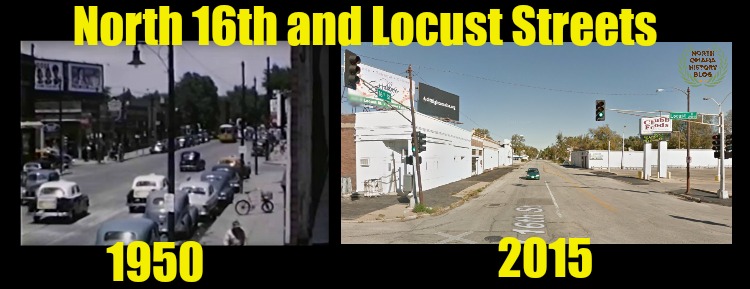

Name That Business!

- 2916 N 16th: Grand Theatre opened in 1916, later becoming the Grand Bar, the Universal Life Church, and today the Mount Vernon Baptist Church. It was listed on the National Register of Historic Places in 2019.
- 2908 N 16th: Originally the site of an A&W Restaurant in the 1930s, this building became many other drive-in restaurants through its life
- 2906 N 16th: Originally the “IT Theatre,” this became a hardware store
- 2918 N 16th: Originally Little Frank’s Tavern, what did this become?
- 2922 N 16th: In 1935, this was the Atlantic and Pacific Grocery Store. It was later combined with its neighborhood to become a furniture store that closed in the 1970s.
- 2902 N 16th: This was a drug store from the time of its construction in the 1910s. It was Lane Drug from the 1950s through the 80s.
- 2828 N 16th: There was a corner grocery here, along with a dentist and a family doctor on the second floor. Anything else?
- 2822 N 16th: That’s Zion Wheel Baptist Church with a Max I Walker next door in 1969.
- 2817 N 16th: The State Bar, which was open from 1898 through 2005
- 2821 N 16th: This was a longtime drug store.
- 2823 N 16th: The Lakeside Billiards was located here starting in the 1880s, and afterward it became a clothing store.
- 2819 N 16th: This was a King Kash Grocery, and then several other chains through the 1980s.
- 2801 N 16th: This was the Corby Theater, also with King Tut’s Diner, Harry Smith Firestone Store, Harry Smith Marine Store, and Club Allusions.
- N 16th: Safeway built a store here in 1916, and a new Hinky Dinky opened on this corner in 1945.
- N 16th: What were these storefront businesses?
Jump in! Any and all responses are welcome!!!

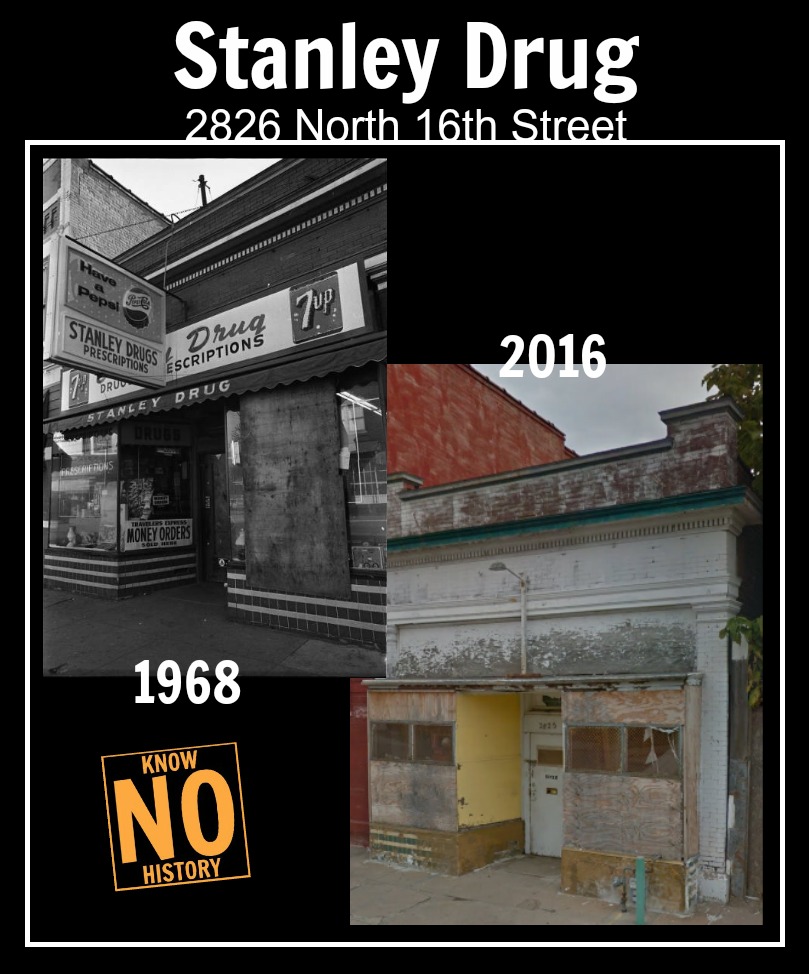






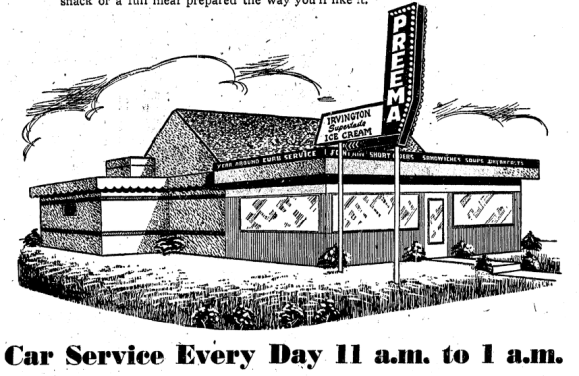


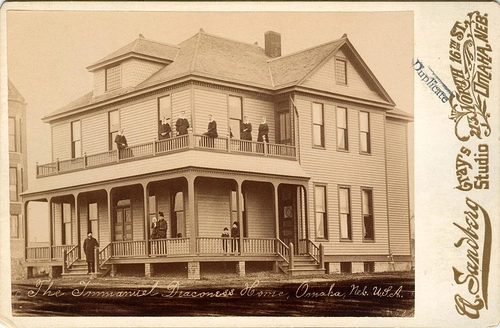

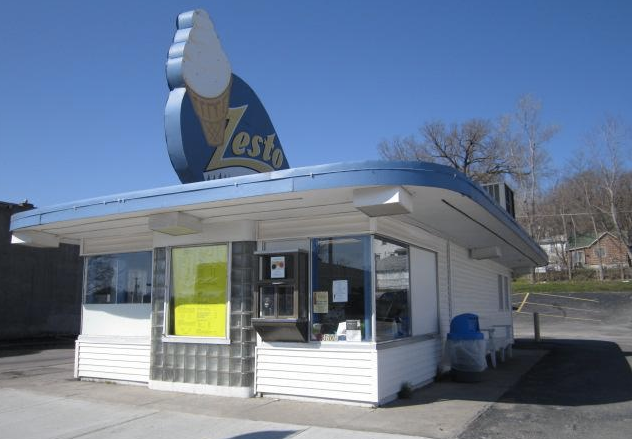
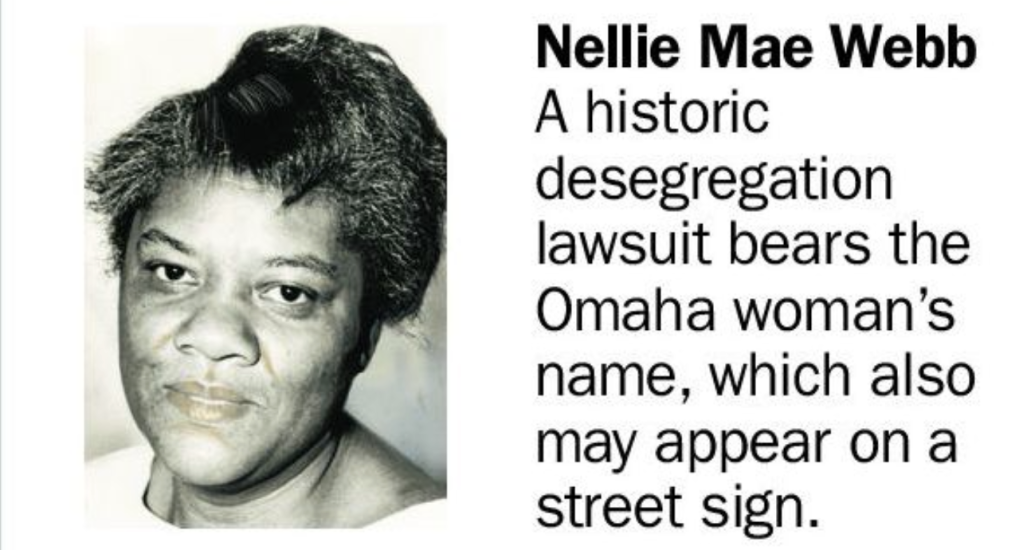
Leave a comment